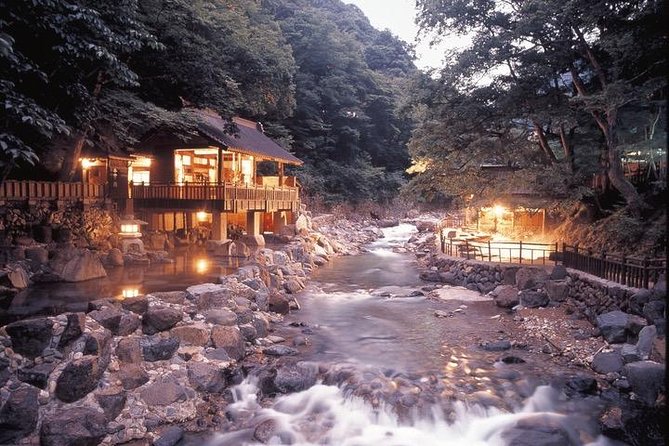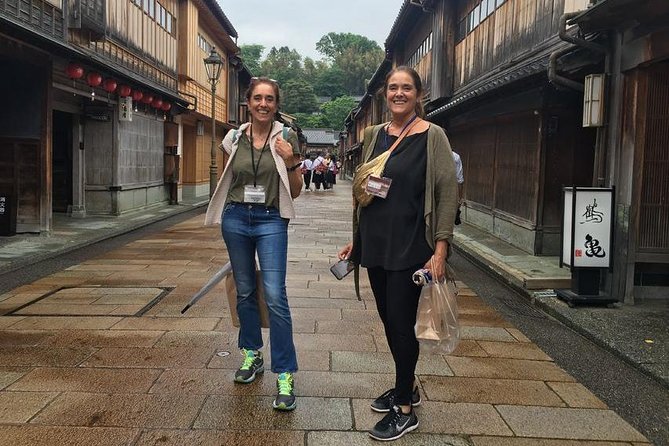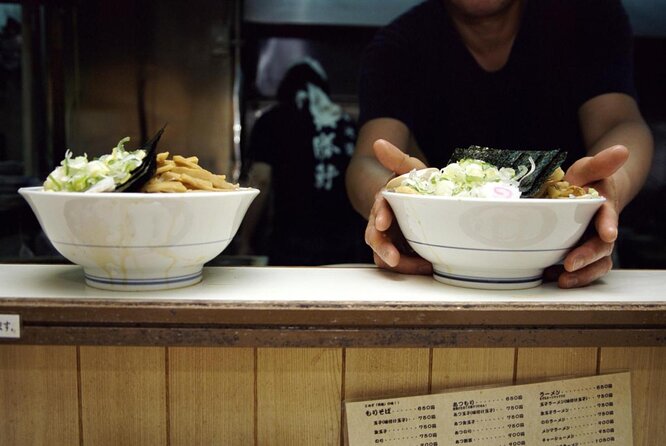Experience the vibrant world of Izakaya dining with a hands-on cooking class in Kyoto. Delve into the rich culture and history behind Izakaya while learning to prepare popular home dishes with a master chef.
Unlike typical Japanese fare, this cooking class offers a unique opportunity to explore the diverse and enticing flavors of Izakaya cuisine. Gain insights into the origins of Izakaya, dating back to the 18th century, as well as learn about the key ingredients and techniques that define this culinary tradition.
Book your own Izakaya cooking class and embark on a culinary adventure in Kyoto.
Quick Takeaways

- Experience a 3 to 3.5-hour cooking class in Kyoto to learn about Izakaya Japanese dining.
- Discover the culture behind Izakaya and learn to prepare popular home dishes with a master chef.
- Explore Japanese cuisine beyond sushi and teriyaki.
- All ingredients, an instructor, and an apron are included in the cooking session.
The History of Izakaya Cuisine
The master chef provides a comprehensive explanation of the history and evolution of Izakaya cuisine, giving participants a deeper understanding of this culinary tradition.
Izakaya’s influence on modern Japanese cuisine is significant, as it has shaped and contributed to the diverse range of dishes found in Japanese restaurants today.
Originally starting as small sake shops during the Edo period, Izakayas gradually began offering small plates of food to accompany the drinks.
Over time, these establishments evolved into casual dining spots that serve a wide variety of dishes, ranging from grilled skewers and tempura to sushi and sashimi.
The evolution of Izakaya dishes reflects the changing tastes and preferences of the Japanese people, incorporating new ingredients and cooking techniques while still preserving the essence of traditional Japanese cuisine.
Exploring Izakaya Ingredients and Techniques
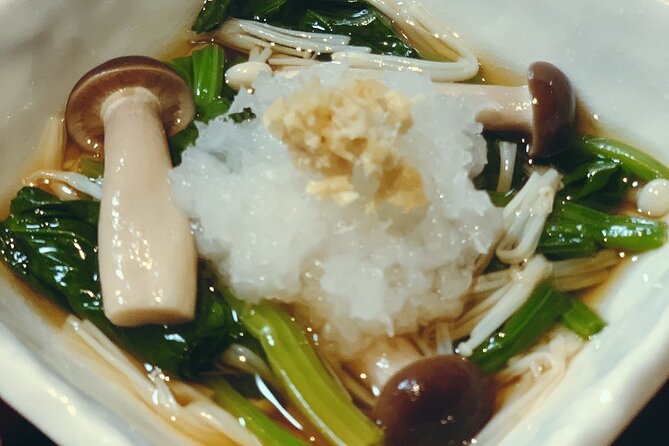
While exploring Izakaya ingredients and techniques, you will learn how to incorporate new flavors and cooking methods into traditional Japanese dishes.
Izakaya cooking techniques refer to the methods used in preparing dishes typically found in Izakaya, which are Japanese pubs or casual restaurants. These techniques often involve grilling, simmering, deep-frying, and marinating ingredients to enhance their flavors.
Exploring traditional Izakaya ingredients allows participants to discover unique and regional ingredients commonly used in these establishments. These ingredients can include seafood, such as yellowtail or mackerel, as well as vegetables like spinach and mushrooms.
Popular Home Dishes in Izakaya Dining
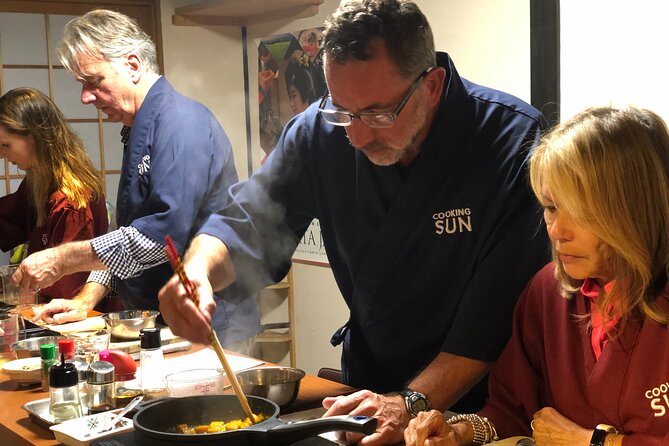
Participants can learn how to prepare a variety of popular home dishes in Izakaya dining, including spinach with sesame sauce, teriyaki yellowtail, vegetable chowder, mushroom tempura, and rice with vegetables.
In an Izakaya style cooking class, participants can enjoy the customs and techniques of this traditional Japanese dining experience. Izakaya dining is similar to pub food in other countries, offering a casual and relaxed atmosphere where people can enjoy a wide variety of small dishes and drinks.
During the class, participants won’t only learn how to prepare these delicious dishes but also gain insights into the Izakaya dining customs and cooking tips from a master chef.
This experience goes beyond sushi and teriyaki, allowing participants to explore the rich and diverse flavors of Japanese cuisine.
Mastering Spinach With Sesame Sauce
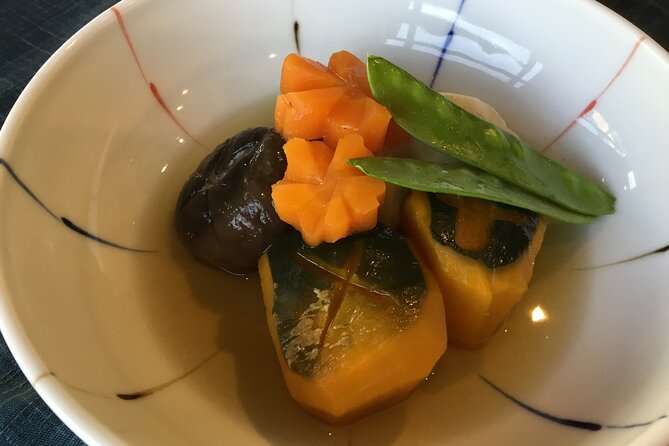
She is determined to master the art of preparing spinach with sesame sauce in the Izakaya style cooking class. This popular dish is a staple in Japanese cuisine and can be found in many Izakaya restaurants. Spinach with sesame sauce is known for its delicate balance of flavors and nutritious qualities. The dish typically consists of blanched spinach topped with a savory sesame sauce made from toasted sesame seeds, soy sauce, and other seasonings. There are different variations of this dish, with some recipes incorporating additional ingredients like tofu or mushrooms. To enhance the flavor of spinach with sesame sauce, chefs often recommend adding a dash of mirin or rice vinegar for a hint of sweetness and acidity. Another tip is to garnish the dish with sesame seeds or green onions for a pop of color and texture. With practice and attention to detail, she will soon be able to create a delicious and authentic spinach with sesame sauce dish.
| Spinach with Sesame Sauce Variations | Tips for Enhancing Flavor |
|---|---|
| Spinach with Tofu | Add a dash of mirin |
| Spinach with Mushrooms | or rice vinegar |
| Spinach with Green Onions | Garnish with sesame seeds |
Cooking Teriyaki Yellowtail Like a Pro
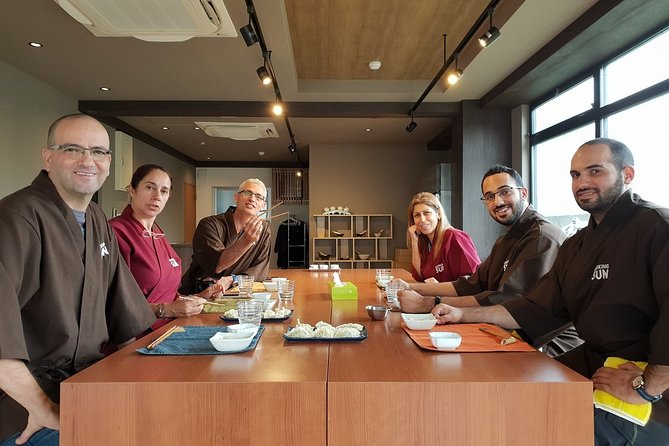
The chef effortlessly demonstrates how to cook teriyaki yellowtail like a pro, impressing the class with their culinary skills. This current discussion topic focuses on the cooking techniques and flavor profiles involved in creating this popular Japanese dish. Here are four key points to consider:
- Succulent and tender: The chef expertly prepares the yellowtail, ensuring it’s cooked to perfection, resulting in a melt-in-your-mouth texture.
- Sweet and savory: The teriyaki sauce, a combination of soy sauce, mirin, and sugar, adds a delightful balance of sweetness and umami to the dish.
- Caramelized glaze: Through careful basting and grilling, the chef achieves a beautiful caramelized glaze on the yellowtail, adding depth and richness to the flavor.
- Harmonious pairing: Teriyaki yellowtail pairs wonderfully with a variety of side dishes, such as steamed rice and sautéed vegetables, creating a well-rounded and satisfying meal.
Tempting Your Taste Buds With Vegetable Chowder
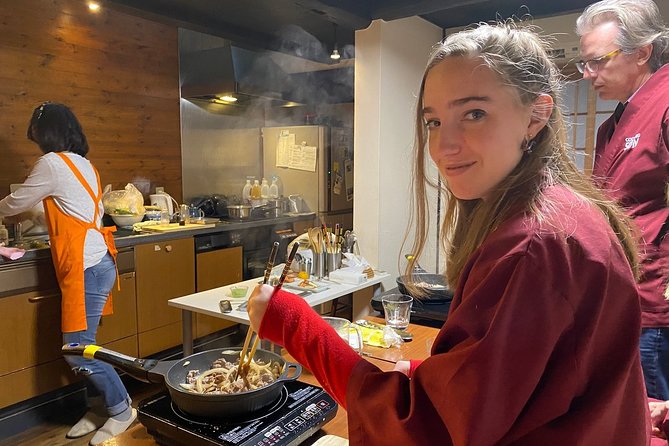
Preparing a hearty bowl of vegetable chowder is a delicious way to tempt one’s taste buds and explore the flavors of this comforting dish. Vegetable chowder variations offer a wide range of options to suit different preferences and dietary needs. From classic potato and corn chowder to creamy cauliflower and broccoli chowder, there’s something for everyone to enjoy.
To make flavorful chowder, here are some tips to keep in mind:
- Use fresh, seasonal vegetables for the best flavor.
- Incorporate herbs and spices to enhance the taste.
- Consider adding a protein element like tofu or beans for added nutrition.
- Don’t be afraid to experiment with different vegetable combinations.
- Finish off with a touch of cream or coconut milk for added richness.
Perfecting Mushroom Tempura and Rice With Vegetables
Perfecting mushroom tempura and rice with vegetables requires carefully frying the mushrooms and combining them with a flavorful mix of vegetables, creating a delicious and satisfying meal. The dish offers various culinary possibilities and allows for creativity in incorporating vegetables into rice dishes.
Here are four reasons why this topic can evoke an emotional response:
- Exploring variations of mushroom tempura in different cuisines can ignite curiosity and excitement, as it opens up a world of flavors and techniques.
- Creative ways to incorporate vegetables in rice dishes can inspire individuals to think outside the box and experiment with new combinations, enhancing their culinary skills and repertoire.
- The satisfaction of creating a visually appealing and nutritious meal using mushrooms and vegetables can evoke a sense of accomplishment and pride.
- The ability to cater to different dietary preferences and restrictions by incorporating vegetables into rice dishes can bring joy and inclusivity to mealtime experiences.
Frequently Asked Questions
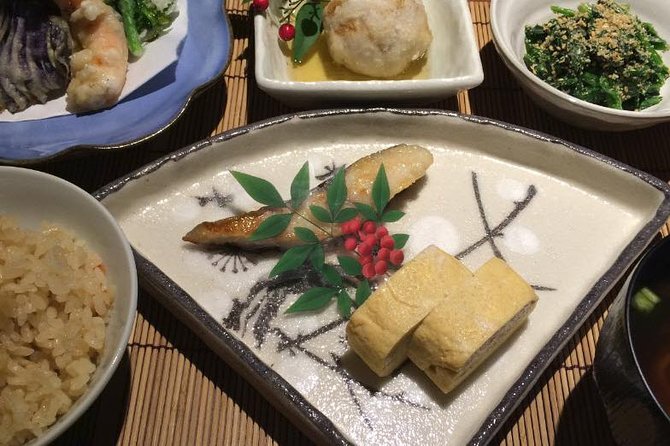
How Many Participants Are Typically in a Cooking Class?
Typically, a cooking class can accommodate a certain number of participants, depending on the capacity of the class. The duration of the class can vary, ranging from a few hours to a full day.
Are There Any Age Restrictions for the Cooking Class?
There are no age restrictions for the cooking class. The class size can vary, and it is recommended to check the specific details when booking.
Is the Cooking Studio Air-Conditioned?
Yes, the cooking studio is air-conditioned. This provides a comfortable environment for participants during the class. In case of any issues with the air conditioning, the studio also has alternative cooling methods to ensure a pleasant experience.
Can I Take Home the Recipes for the Dishes We Prepare?
Yes, participants in the cooking class experience have the opportunity to take home the recipes for the dishes they prepare. Recipe sharing is a key aspect of the class.
Are There Any Additional Charges for Ingredients or Equipment Used in the Cooking Class?
No, there are no additional charges for ingredients or equipment used in the cooking class. All necessary ingredients and equipment are included in the cost of the class.
The Sum Up
The Izakaya cooking class in Kyoto offers a unique and immersive experience for those looking to explore the vibrant world of Japanese cuisine.
With a rich history dating back to the 18th century, participants won’t only learn to prepare popular home dishes but also gain insights into the origins and techniques behind Izakaya dining.
With positive reviews highlighting the fun and delicious experience, booking a class is sure to be a tempting opportunity for any culinary enthusiast visiting Kyoto.


